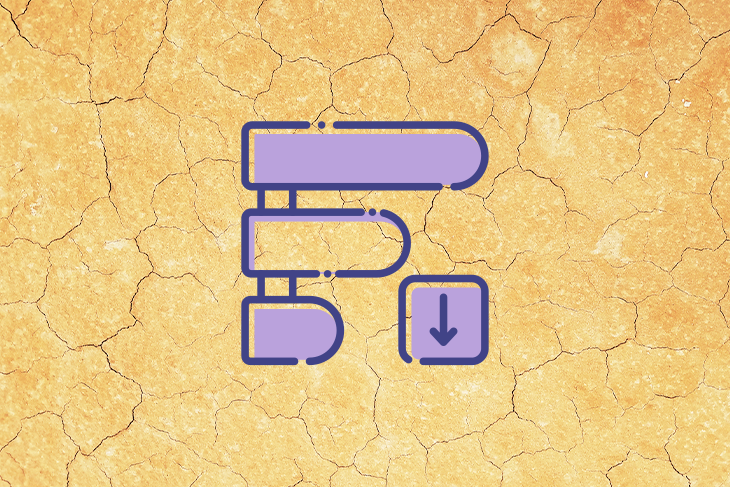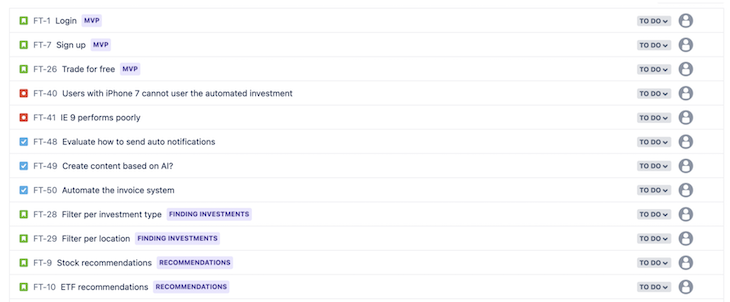The product backlog is a critical artifact for teams using agile frameworks such as scrum and kanban.

Whenever I get involved with a new team, one of the first things I look at is the product backlog because it reveals a lot about the team’s agile maturity and goal orientation. Unfortunately, what I often find is quite ugly.
Some examples of backlog-related antipatterns I’ve come across include:
These are just a few examples of the atrocities I’ve seen. Why these things happen varies dramatically from place to place.
In this guide, we’ll help you understand what a product backlog is, review common traps for agile teams to avoid, and define who is accountable for backlog prioritization.
A product backlog is a prioritized list of tasks — including new features to build, bugs to fix, improvements to implement, etc. — that is derived from the product requirements and roadmap. It is a scrum artifact that serves as a to-do list for agile development teams.
Let’s define product backlog even more granularly. According to the Scrum Guide, a product backlog is “an emergent, ordered list of what is needed to improve the product. It is the single source of work undertaken by the Scrum Team.”
Breaking down this definition piece by piece:
Here’s the bottom line: the simpler your product backlog, the better.
When considering what to include in a product backlog, the key is to focus on collaboration instead of prescriptive items.
In theory, the scrum team can choose how to organize and format the product backlog. That may work if you have enough seniority among the team. If not, things will quickly derail.
The following items are commonly included in a product backlog:
An epic represents a big picture of something you want to achieve. It should name the desired result and why that matters.
An example of an epic might be implementing search recommendations with the expected outcome of increasing conversion rate.
A user story names the problems you want to solve and why they matter.
User stories should be enablers to reaching the goal of epics. But keep in mind that the focus is on collaboration and not contracts. Keep your stories as invitations for conversations and refine them with your teams.
A bug is an unexpected behavior. When creating bugs, you should precisely name how to reproduce them and estimate the importance and percentage of impacted users.
The team doesn’t work only on features. They also have some jobs to keep the lights on.
Generally, this is best represented by a task — for example, “set a backup routine,” or “update the angular version.”
Sometimes, the team doesn’t know where to start. They may have understood the problem but solving that requires some research.
A spike is good for those cases. You define a goal and timebox it.
The product backlog item types described above intend to simplify how you work and set clear expectations for each type. I recommend limiting it to five types; don’t go wild. Otherwise, confusion is the result.
The following image represents an example of a product backlog for an investment platform:

The content of a product backlog must be aligned with your product strategy, which hopefully aligns with your product vision.
The items inside of your product backlog enable your team to get a step closer to the goals you’re pursuing. If not, they should be removed.
Collaboration is a core part of product backlog management. When you’re aligned, managing the product backlog becomes a piece of cake.
Roles involved in product backlog management include the product manager, stakeholders, and agile teams. Let’s take a closer look at the responsibilities of each:
The product manager is ultimately responsible for the product backlog’s content and prioritization. However, that doesn’t mean that PMs must work alone. Great professionals set the right context and let the team evolve the product backlog content.
Many teams encourage stakeholders to create tickets in the product backlog. That often gets in the way of collaboration because it becomes a service-provider relationship.
A better way is to focus on partnering with stakeholders and endeavoring to understand their needs and how they align with the strategy and vision.
Team members are encouraged to create product backlog items. For example, software engineers commonly create tech debt items and designers point out usability glitches.
That said, it’s the product manager’s responsibility to decide what makes it to the top of the list. The secret is to inform the why behind each item and what that enables.
Scrum includes both a product backlog and a sprint backlog, which often leads to confusion. Let’s look to the Scrum Guide to clarify the distinction:
“The Sprint Backlog is composed of the Sprint Goal (why), the set of Product Backlog items selected for the Sprint (what), as well as an actionable plan for delivering the Increment (how).”
In summary, the sprint backlog contains what the team will focus on during the sprint cycle. It’s often a subset of the product backlog focused on reaching the sprint goal.
The following table highlights the differences between a product and sprint backlog:
| Product backlog | Sprint backlog | |
| Focus | Enable the team to achieve the product goal | Enable the team to achieve the sprint goal |
| Responsibility | Product owner/managers | Scrum team |
| Content | Epics, user stories, bugs, spikes, and tasks | Subset of tasks that level up to the sprint goal |
| Crafting | The entire scrum team | Developers (software engineers, UX designers, QA, data analysts) |
| Evolving | Refinement sessions | Sprint planning |
The product backlog is a strong indicator of a team’s agile maturity. When done right, it will help your team benefit from agility.
The more you focus on collaboration, the more agile you become. The more you focus on processes, the less agile you become.
Below are some best practices for effective backlog management:
All items inside the product backlog must be related to an ultimate goal. If backlog items don’t level up to an established goal, you should remove them.
Keep your backlog items focused on opportunities and problems. Don’t write detailed requirements.
To put it simply, a developer should not be able to pick an item from the backlog and implement it without talking to you. Focus on talking to your team and building understanding together. Otherwise, your team will descend into a waterfall mindset.
The older a backlog item is, the less relevant it becomes. The quicker you remove outdated items, the faster you can focus on your learnings.
Some teams like having standards for product backlog items. This can hurt your collaboration.
I would discourage you from using definitions of ready because the focus shifts to meeting standards instead of collaborating with your team.
As stated in the Agile Product Manifesto, “Keep the Product Backlog clean. Backlog items age like milk, not like wine .”
It’s equally important to understand what to do and what not to do. We often focus on getting things done right but still fall into common pitfalls.
There are many common antipatterns associated with product backlog management. We’ve already touched on some of them, but here is a more complete list of traits your product backlog should NOT have:
Your job isn’t to populate the product backlog with all your stakeholders’ wishes. You must ensure your items contribute value and are related to a common goal.
I mentioned this already, but it’s worth emphasizing.
There should be only one product backlog per product. You will be pressured to maintain several, but confusion becomes inevitable once you fall into that.
Remember that the product backlog is a vehicle to create value. Unlike waterfall projects, it’s not a place to drop extensive requirements and demand people to deliver them.
Meaningful product backlog items describe problems, why they matter, and expected outcomes. In short, the whole team is part of the solution.
The longer your product backlog is, the more pressure your team has to deliver.
An extreme backlog cleaning is essential. It’s like your house: if you don’t remove the dust, eventually, you cannot get in anymore.
The backlog is just the same: you won’t have mental space for new items if you don’t remove outdated items.
Although I named user stories a type of product backlog item, each team can choose what fits them best.
For example, you can work with job stories, use cases, jobs to be done, etc.
The point is, the team should focus on creating value faster instead of precisely maintaining the product backlog.
To quote the Agile Product Manifesto again, “Creating value for end-users and businesses is what defines success .”

LogRocket identifies friction points in the user experience so you can make informed decisions about product and design changes that must happen to hit your goals.
With LogRocket, you can understand the scope of the issues affecting your product and prioritize the changes that need to be made. LogRocket simplifies workflows by allowing Engineering, Product, UX, and Design teams to work from the same data as you, eliminating any confusion about what needs to be done.
Get your teams on the same page — try LogRocket today.

A practical framework for PMs to use AI in ideation without sacrificing judgment, strategy, or decision quality.

A practical five minute revenue estimation method to help product managers compare ideas, drop low impact features, and prioritize smarter.

A practical guide for PMs who want to stop being bottlenecks, delegate smarter, and lead teams effectively with a clear ownership framework.

Stop letting unreliable data block features. Treat data as inventory to track quality, ownership, and ship with confidence.